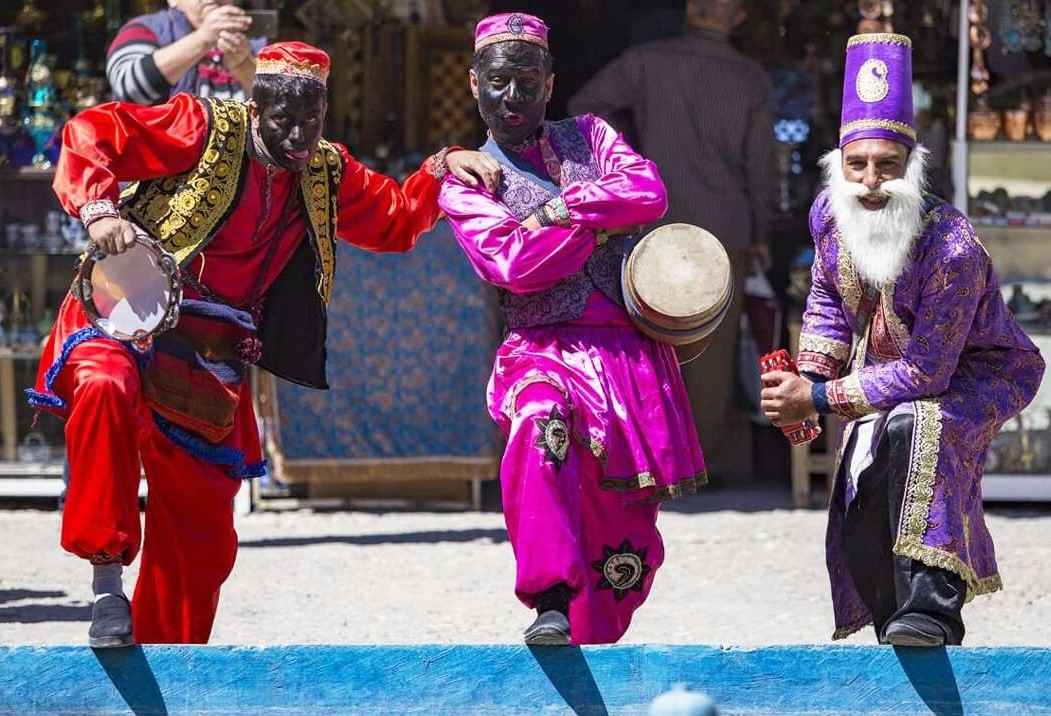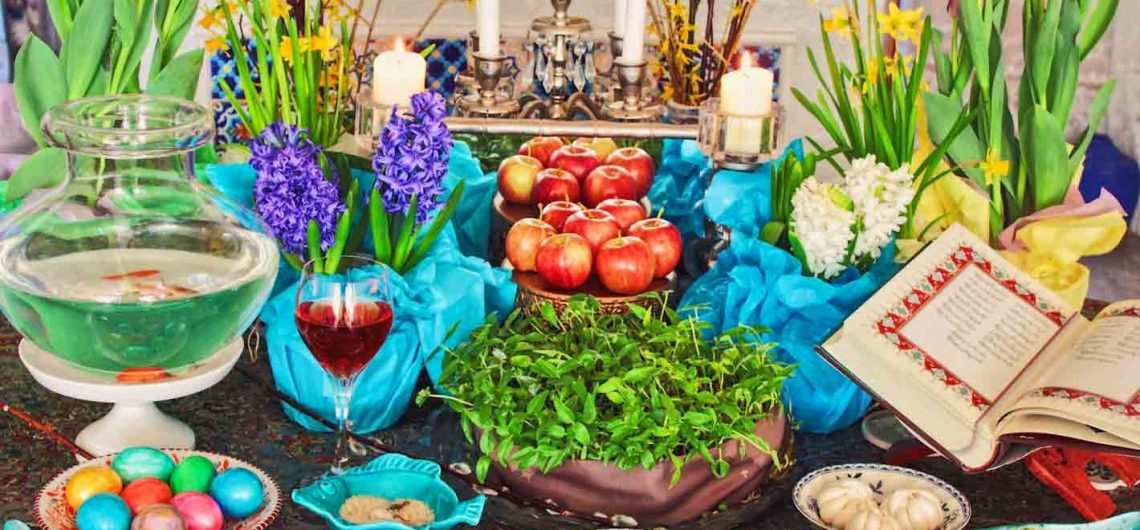The Persian New Year “NOWRUZ”: March 21 and the first day of spring
In the Persian language called “Farsi”, Now means “new” and Ruz “day”; the term Ruz is the result of the contraction of the name of Hormozd, in turn derives from the name of Ahura Mazdah, the “Wise Lord” the divine figure of the Zoroastrian religion. This festival coincides with the first day of spring (March 21-22), when the sun enters the sign of Aries, the first sign of the zodiac. According to the mythical Iranian and Zoroastrian traditions, Nowruz is the day in which the universe was created, which in turn can also mark rebirth.
For most Iranians, the most important non-religious holiday of the year is Nowruz, the euphoric and well-practiced period of celebration on the occasion of the Persian New Year. Since the Achaemenid era, the arrival of spring has been celebrated with majestic feasts in all the satrapies of the Persian Empire. In fact, even today on the walls of Persepolis you can admire the symbols of Nowruz and the Iranian New Year. They are the witnesses of the rebirth and renewal of Nature. These are two animals: the lion and the bull / unicorn. According to archaeologists, the first is the symbol of heat and the sun and the other is the symbol of cold, the moon and the night. These carvings on the walls show us the battle, in which it seems the lion is about to win. The victory of the lion is the emblem of Nowruz and the arrival of the new year. The rest of the engravings show armed troops gathered around the Achaemenid king as they celebrate the end of the cold and winter.
Omar Khayyam in his work Nowruz-nameh which means “New Year’s letter”, wrote about the holiday: “the reason for the appearance of Nowruz derives from the fact that the sun has two cycles: one of these is that 365 days, a fourth after which he returns to zero degrees of the sign of Aries, on the same day and in the same minute he left it “. This is why every year lasts 365 days.
Family preparation and tablecloth decorations
The Nowruz period, before and after the event, consists of a series of traditional events and rituals. On a private level, a few days before Nowruz, the families carry out an important cleaning of the houses. From the beginning of March, the lentils or wheat are bathed to make them germinate on a plate that creates a small carpet of green grass, called sabzeh. The latter is one of the most important symbols of the festival which will then be placed among the seven objects on the table. During this period before the holidays, families buy new clothes, especially for children.

On the streets, in the last days before the New Year, it is possible to meet Hajji Firouz, a traditional character dressed in black and dressed in red, equipped with a tambourine who sings and dances, wishing his best wishes for the new year.
Nowadays, in general, he is a street musician, but he is still a symbol of the arrival of Nowruz. In the neighborhoods and between the queues, the men who disguise themselves as Hajji Firouz pass through the streets and cars in front of the red lights, dancing and singing: Hajji Firouzeh sali yek rouzeh; literally: “it’s Haiji Firouz, he only comes once a year”. People then donate their offerings to help him on New Year.
Public celebrations begin the night between the last Tuesday and the last Wednesday of the previous year, with the rite of Chahar Shanbeh Souri.
In the last days before the new year, in the intimacy of the homes of families of Iranian origin, the Nowruz table is set up, which is called “sofre-ye haft siin” (literally, “the tablecloth with the seven Ss”): the table it is decorated with a tablecloth (sofre), where we have seven objects, whose names begin with the letter of the Persian alphabet “س” (siin), which corresponds to the phoneme [s] of the Italian alphabet. Among the elements of the seven siin, we can find, in particular, the sib (apple), the serke (vinegar), the somaq (sumac), the sekke (coin), the sonbol (hyacinth), the sabzeh (the cat grass , obtained from wheat germs or lentils) and sir (garlic). These elements symbolize the wishes for the new year, such as prosperity, health, wealth, strength, etc. On the table you can also have other objects, such as candles, a mirror, a jar with red fish, colored and decorated eggs, cakes, sacred books, which also have symbolic auspicious meanings. We recall that the number seven is mentioned in the Koran, in at least seven suras and verses; the Holy Text speaks on various occasions of “seven days”, “seven nights”, “seven seas”, “seven heavens” etc.
Also according to the Zoroastrian religion to respect the angels who are around AhuraMazda (Unique God) and their names begin with “S”, for this reason seven types of food products that in our language begin with “S” were placed on the table by the ancient Persians, thus the famous Haft-sin (Seven S) was created.
In this period the Nowruz buying ceremony takes place, purchases of the products and food that will be used for the day of Nowruz. In the last moments before the transition to the following year, that is, on New Year’s Eve, the streets are very busy. The next day, Farvardin’s first day (March 21), the first day of the new year, the traditional “eid didani,” family visits “begin. According to tradition, it is always up to the little ones to visit the older members of the family. By visiting their family’s grandparents, uncles and aunts, children receive gifts or sometimes even money.
The traditional dish of the first day of Nowruz is “sabzi polo ba mahi”. This dish is then accompanied and served with fish and “koukou sabzi” which is the herb omelette – the same herbs as sabzi polo -. When the clock indicates the arrival of the new day, the first day of the new year, family members, often in new clothes, gather around the table, near the shelf where the Haft Sin has been placed. At the start of the New Year which falls at a precise moment, everyone hugs each other, wishing each other health and well-being. Even on the street when you meet the neighbors they say “Sad sal bé in sal-ha” (which is a hundred years better than this) and other wishes of this kind.
And then the Nowruz symposium which is New Year’s lunch or dinner – it depends on which time the precise time of the new year falls – a table that has its own infinite courses from appetizers to desserts and dried fruit, comparable to dinner on the eve of Christmas. The typical dish of the Nowruz is the Sabzipolo mahi which is a dish based on basmati rice mixed with chopped aromatic herbs such as parsley, dill and chives accompanied by the delicious meat of a Caspian fish, the Kutum or Caspian White Fish. In Iran as Mahi Sefid – sefid in Farsi means white due to the meat of this fish which is very tender and white.
Then the older members distribute the eidi (small gifts and presents) to the grandchildren and the youngest of the family: generally, depending on the financial resources, they offer new banknotes (a gesture of benevolence also used in the workplace, in favor of employees or subordinates).
Sizdah bedar: the thirteenth day of spring
The Nowruz celebrations last almost two weeks, the schools will remain closed, while the offices follow public holidays ranging from March 20 to 24. Sizdah in Farsi means thirteen in fact the thirteenth day, a public holiday, is called sizdah bedar; the day is spent outdoors, in short, a sort of picnic with the usual rituals. In a certain sense, this period also corresponds to what in Italy we know as the April Fool’s Day, also because on the day of sizdah bedar, there are similar attempts. On sizdah bedar day, families go out to have a picnic and enjoy the arrival of spring; it is a very serious picnic, and it prepares everything from food to desserts. Most people leave their homes to go to a park and spend the day in nature. According to the Iranians, contact with nature, starting in spring, is a reopening towards a new phase of life, which brings good luck for the rest of the year. Members of the same family eat together and chat during this picnic in nature to conclude the party. At the end of this day, the sabzehs, the cultivated shoots “, are thrown into running water, for example into a river to make the year’s evil and misfortune disappear. It is also customary for young unmarried girls to tie a knot on the grass itself before throwing it, crossing their fingers, expressing their desire to get married before the next sizdah bedar.



Comments